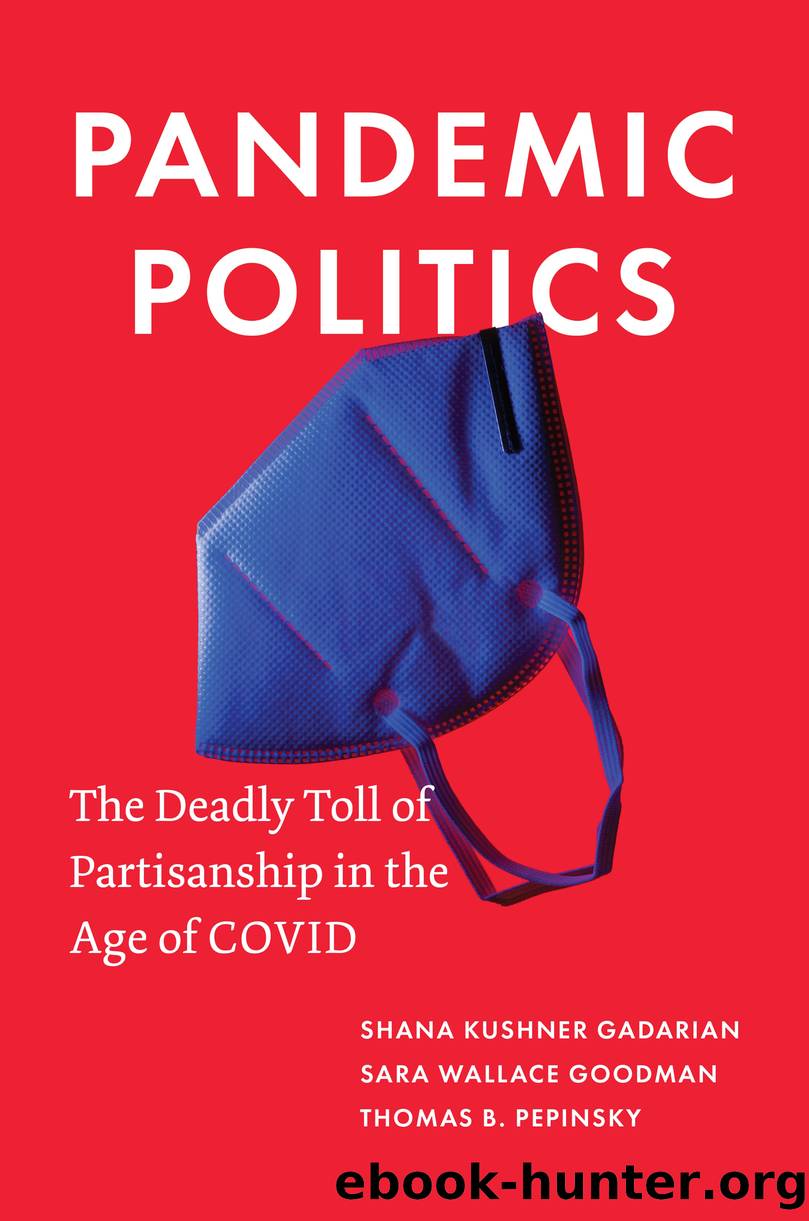Pandemic Politics by Shana Kushner Gadarian

Author:Shana Kushner Gadarian
Language: eng
Format: epub
Publisher: Princeton University Press
Published: 2022-07-05T00:00:00+00:00
8
The Burdens of Inequality
RACE AND THE COVID-19 PANDEMIC
In March 2020 Michigan was under a state of emergency because of the coronavirus pandemic, but the buses in Detroit were still running. Essential workers needed to get to work, people needed to shop for groceries or go to the doctor, and residents without a car had little choice but to take the bus. Detroit is a poor city: more than 50 percent of its residents live below the poverty line. The city has a legacy of residential segregation that has left predominantly Black neighborhoods with fewer resources and higher crime rates than predominantly white neighborhoods.1 Black residents are also more likely than white residents to live in dense neighborhoods with fewer hospitals and pharmacies and are more likely to be public transit riders than white residents.2
One bus driver named Jason Hargrove went to work in March 2020 despite the risks posed by the coronavirus. At the time, bus drivers were not provided with personal protective equipment, and passengers were not socially distanced or masked. On March 21, Mr. Hargrove posted a Facebook video criticizing a rider for coughing in the bus without covering her mouth, noting that she was putting everyone at risk. He pleaded with people in the public to take the virus seriously, saying â âI feel violated. I feel violated for the folks that was on the bus when this happened,â he said, adding: âTo those who are watching, thisâthis is real.â â3 On April 3, the Centers for Disease Control and Prevention (CDC) started recommending that the public consider wearing cloth masks in public. This recommendation came too late to help Mr. Hargrove, who died of COVID-19 on April 1, 2020.
What happened to Mr. Hargrove is emblematic of what would happen time and again across the United States over the coming months. Hargrove was a Black man working as a frontline worker during the early days of the pandemic in a city with clear racial inequality in housing, employment, infrastructure, and access to health care. Minority communities suffered early and disproportionately from the virus as well as from the economic fallout from the pandemic. Communities of color were also slower to get the vaccines aimed at ending the pandemic. As Brookings Institution fellow and sociology professor Rashawn Ray wrote in April 2020, âWhen America catches a cold, Black people get the flu. Well, when America catches coronavirus, Black people die.â4
So far in this book, we have focused on how Americansâ responses to the pandemic were shaped by their partisan identities. With over eight hundred thousand Americans dead from COVID-19 in December 2021, no part of our nation was spared from the pandemic. But we know all too well that other identities, particularly race and ethnicity, mattered a great deal in how people experienced the pandemic. We saw this in chapter 5, when we looked at race and schooling during COVID-19, and again in chapter 6, when we explored the racial dynamics of unemployment during COVID-19. Here we examine
Download
This site does not store any files on its server. We only index and link to content provided by other sites. Please contact the content providers to delete copyright contents if any and email us, we'll remove relevant links or contents immediately.
The Secret History by Donna Tartt(18246)
The Social Justice Warrior Handbook by Lisa De Pasquale(11965)
Thirteen Reasons Why by Jay Asher(8481)
This Is How You Lose Her by Junot Diaz(6466)
Weapons of Math Destruction by Cathy O'Neil(5864)
Zero to One by Peter Thiel(5512)
Beartown by Fredrik Backman(5375)
The Myth of the Strong Leader by Archie Brown(5252)
The Fire Next Time by James Baldwin(5035)
How Democracies Die by Steven Levitsky & Daniel Ziblatt(4973)
Promise Me, Dad by Joe Biden(4916)
Stone's Rules by Roger Stone(4876)
100 Deadly Skills by Clint Emerson(4705)
A Higher Loyalty: Truth, Lies, and Leadership by James Comey(4569)
Rise and Kill First by Ronen Bergman(4555)
Secrecy World by Jake Bernstein(4411)
The David Icke Guide to the Global Conspiracy (and how to end it) by David Icke(4403)
The Farm by Tom Rob Smith(4335)
The Doomsday Machine by Daniel Ellsberg(4255)
